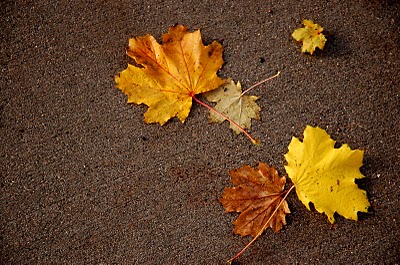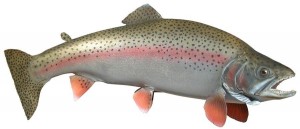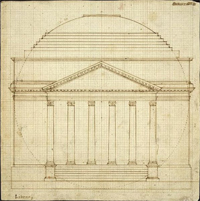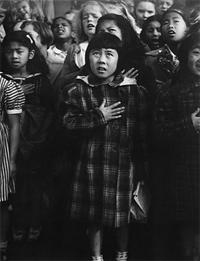I have been discussing some of Susan Sontag’s thoughts on photography with the students in my First Year Composition classes lately, and her comments about the way that photographic images fragment our modern sense of reality have made me think about how the same ideas might apply to poetry. Though our sense of the “real” in reading a poem is more diffused than the expectation of strict verisimilitude that we have in looking at photographs, a poem can, in some way, still be thought of as a lens or a frame through which we are given a curated glimpse into an event, thought, or world.
Weekly Prompt: Complicating Narrative Structure
Draft a traditional narrative poem that describes an event or experience from real life. This doesn’t need to be derived from your own life—something from the news, or a book you’ve read is fine. Focus on using detail and description to tell a story, accurately and with as much emotional clarity as possible. Feel free to experiment with sound, image, and/or metaphor if it helps you better access the “truth” of the experience.
Return to your draft, taking into consideration how you might structure your narrative in a way that adds layers of meaning. You may need to experiment with several options, but some ideas to consider are:
- locate a companion text (or write another piece) that you can weave into the narrative of your draft in such a way that generates and complicates meaning
- develop a second poem that describe a corollary event to the first, then weave the two together
- break the poem into sections, each narrated from a different point of view
- extract a few lyrical details from your draft and develop a refrain, to be repeated throughout the poem as a force of both unity and change
Spend some time working and reworking your poem, but give it the freedom to become an entirely different piece. Also keep in mind that the objective of complicating structure is to deepen/layer meaning, and that these new meanings may not emerge until midway through the (re)structuring process.
Weekly Prompt: Departures

The recent passing of a loved one and the swiftness with which summer weather has taken leave of South Bend has had my mind turning over the idea of departures recently.
When we are the ones who depart from a place, we simultaneously take part in entering into someplace, or something, else. But when we are the ones from whom someone or something departs, we mourn by collecting fragments: wisps of things which we try to stitch together to preserve some approximation of that which we have lost.
Today’s prompt is short, and simple.
Prompt: Write a poem about a departure. OR, alternately, write a poem about the experience of being left behind by someone or something else who has departed from you.
Weekly Prompt: Engaging the Image
Using Elizabeth Bishop’s “The Fish” as a model, write at least 20 lines of detailed, concrete observation that describes a single object. Move past the obvious and think instead how you can describe the thing as if seeing it for the first time. Using tools like sensory detail, metaphor, and simile, defamiliarize the object to the extent that it becomes an object of wonder—terror, even. Hone your powers of observation by delving into the fantastical, allowing your subconscious to reveal what’s most strange or troubling about your subject of scrutiny.
Work with all of the senses (including the imagination) to allow your reader to really see the object—and then to see it again, even more closely. Avoid abstractions and “I” statements, communicating instead a sense of the “I” through the types of concrete detail included in the poem.
After finishing your initial draft, return to the piece and think how you can invest specific details with greater emotional resonance (ie. in describing the worn laces of a man’s boot, how can you actually address the nature of his relationship with his father?) through word choice, tone, and pacing. Expand on one (or two) of your most promising details and develop an original, full-fledged image (for example, the severed ears in Carolyn Forche’s “The Colonel,” or the lantern-heads in Victoria Chang’s “Lantern Festival”), one that functions as objective correlative to the subject matter of the poem.

Weekly Prompt: Borrowed Headlines

This week’s prompt is inspired by the story behind Elizabeth Bishop’s famous poem “The Man-moth,” whose concept (and title) were derived from a newspaper’s misspelling of the word “mammoth.” While reflecting on the poem in a 1962 piece, Bishop mused,
“I’ve forgotten what it was that was supposed to be “mammoth.” But the misprint seemed meant for me. An oracle spoke from the page of the New York Times, kindly explaining New York City to me, at least for a moment.”
In “The Man-moth,” Bishop allows the content of the newspaper’s article to be subsumed by the wonderful strangeness of the misprint’s language. She excavates the question of what a man-moth might be, and builds an alternative universe around the idea. We are given a portrait of a subway-dwelling creature that is all eyes and all secrets, to whom the bustle of the surface world is threatening, but who finds comfort in the racing and lurching of the subway trains:
“Then he returns
to the pale subways of cement he calls his home. He flits,
he flutters, and cannot get aboard the silent trains
fast enough to suit him. The doors close swiftly.
The Man-Moth always seats himself facing the wrong way
and the train starts at once at its full, terrible speed,
without a shift in gears or a gradation of any sort.
He cannot tell the rate at which he travels backwards.”
I am interested in the idea of what might be done with borrowed and revivified language of this sort. The newspaper-based exercise that I’ve delineated below is only one place to start, but I imagine that one could also get equally interesting results with another type of source: copy from internet advertisements, perhaps? the names of dishes on menus? informational text from a museum, zoo, or aquarium exhibit? The possibilities are pretty well endless.
Prompt: write a poem that takes, as its title, a headline or article title that has been borrowed from a newspaper. What fresh or alternative meanings might be excavated or derived from the headline’s syntax? Feel free to tweak (splice, loop, embellish) or even completely ignore the article’s actual contents.
If you’re looking for a place to start out, here are some titles of New York Times articles that I recently came across, which I thought might make for interesting titles of poems:
Eight Million Bodies in the Naked City
Two New Paths to the Dream: Regeneration
Illinois: Invader Carp May Have Been At Home
What the River Dragged In
The Senate’s Important Lunch Date
Broadway and the Mosque
Weekly Prompt: Architectural Poem

This week’s prompt has a shorter explanation than usual. I was simply very intrigued by Mei-Mei Berssenbrugge’s use of a particular building’s architecture to shape her poem “Permanent Home.” As Berssenbrugge engages with structural forms and technical language, the walls and beams of the house she’s describing become transparent, windows through which we can peek in at the speaker’s interior life while she peeks at us.
“The water tank sits on a frame of used wood, like a packing crate.
I look through it to an extinct volcano.
The panorama is true figuratively as space, and literally in a glass wall, where clouds appear like flowers, and the back-lit silhouette of a horse passes by.
A file of evergreens secures the cliff amid debris from a crew bilding, as at the edge of the sea.
Oranges, dumplings, boiled eggs take on the opaque energy of a stranger.
Knowledge as lintel, bond beam (model signs) holds the world at a distance.”
I love that last line, in particular. Berssenbrugge evokes such space and light with it. A home (even an imagined one) becomes a whole world, a place of origin and a vantage point from which one develops one’s perspective. And the lack of an actual physical structure to which to tie the speaker’s longing transforms the poem itself into a kind of home in which imagination dwells. A process that, I think, has particular resonance for me, not just as a child of diaspora, but as one such subject who writes.
Prompt: Write a poem that uses the architectural structure of a building as a frame or form by which to shape its content and imagery.
Weekly Prompt: Inversion

A couple of weeks ago, we posted an imitation exercise, so I thought it would only be fitting to post that exercise’s opposite: writing an inversion. I’ve done this exercise a few times before, and on each occasion I’ve found it very difficult! The decisions one has to make about how to flip another poet’s meaning inside out and yet still remain somewhat faithful to the sonic/syntactical frame of the original poem and at the same time create a piece that has some aesthetic sense to it really stretch one’s abilities in all sorts of ways. Though I couldn’t imagine the results of any of my inversions as finished poems (I’m not yet good enough at the exercise to have made it really work for me!), I’ve often found myself being pleasantly surprised by the fresh aesthetic directions in which the exercise has pushed my language and has caused me to step out of myself. Often, I find that allowing myself the freedom to write what feels like complete nonsense truly makes me pay further attention to technicalities of sound and word choice.
Prompt: Write a poem that is an inversion of another poem. Take each line of the original poem and try to write its antithesis or opposite, subverting the original poet’s imagery and meaning while remaining as close to their rhythms and syntactical patterns as possible.
Just for kicks, here is an excerpt from a first draft of an inversion exercise that I patterned on Pattiann Rogers’ “Address: the Archaeans, One Cell Creatures“:
“Yes, some are fully clothed
but too large for even the boldest
black and white and since they are silent
and neither tuneful nor stoic, they are,
therefore, not any less than mirage, less
than illusion, less than truth.They have not stood against stiff
white desert surfaces and stayed,
they have crumbled beneath the breath of equatorial steam, have failed to root
amidst loose radicals and reactive
salts, slipped away easily while coughing up
conjoined flesh. They are more whimsical
than concrete, far more solitary
than black holes (. . .)”
Another interesting possibility for the inversion exercise—one that I have yet to fully explore myself—is the opportunity that it might afford for a poet to “write back” at the politics of a poem representing a set of ideals that he or she might want to subvert. I’ve yet to find a poem that this would work well with for me (the success of the exercise depends as much on one’s choice of an original poem as it does on the execution!), but if you’ve tried this before successfully, I would love to hear about your experience—please do share your thoughts with us in the comments!
Happy writing, and happy weekend!
Weekly Prompt: Letter to My Country

I recently visited the MOMA in New York City, where I had the chance to see a print of Dorthea Lange’s famous image of a Japanese American girl reciting the Pledge of Allegiance hanging in their photography gallery. Lange’s photo, taken during the Internment era, when Japanese Americans’ loyalty, Constitutional freedoms—and indeed, their human dignity—were under extreme duress, serves as a witness to the injustices of the past, but also reminds us of the fact that we, despite our often-difficult political relationship to this nation that we claim as our home, are a part of it. That we participate in the making of the messy narrative that is American history, and that the narratives that make up the history of this nation are necessarily entangled with our own. In short, this is our America, too.
Independence Day is coming up, and in thinking about our history as Americans of color, I’m inspired by the fraught complexity of the relationship between nation and speaker that exists this poem by Claude McKay [text via the Poetry Foundation]:
America
by Claude McKay
Although she feeds me bread of bitterness,And sinks into my throat her tiger’s tooth,Stealing my breath of life, I will confessI love this cultured hell that tests my youth.Her vigor flows like tides into my blood,Giving me strength erect against her hate,Her bigness sweeps my being like a flood.Yet, as a rebel fronts a king in state,I stand within her walls with not a shredOf terror, malice, not a word of jeer.Darkly I gaze into the days ahead,And see her might and granite wonders there,Beneath the touch of Time’s unerring hand,Like priceless treasures sinking in the sand.
Prompt: Write a poem in the form of a letter to your country.
Weekly Prompt: Imitation

One of the most productive creative writing exercises that I was assigned in college was to write an imitation of Charles Wright’s poem “Clear Night.” My instructor did not give many specific instructions, other than to use the form of the poem as a type of “template” for my own. I struggled incredibly with the assignment at first, but eventually decided to simply follow (approximately), the rhythms and repetitions of Wright’s syntax. Once I had decided that, and chosen an opening image, I found that the content of the poem found itself. When I first started to write, the poem was (oddly) about mouth ulcers — but somehow that evolved into a vision of a body riddled with the effects of radiation sickness.
In particular, I found myself drawn by Wright’s magnetic use of anaphora: “And the wind says “What?” to me. / And the castor beans, with their little earrings of death, say “What?” to me. / And the stars start out on their cold slide through the dark. / And the gears notch and the engines wheel.” I followed these patterns closely with my own lines: “But the earth grew deaf to her. / And the ore, with its necklace of fallen particles, grows dim to her. / And the moon grows cold, and the wind shifts / And a thought slips from her fingers.”
What began as an exercise in imitation became the poem “Marie Curie, Dying,” the poem that began my obsession with writing about science and that would, in time, become the first poem of my MFA thesis.
Prompt: Write a poem that closely imitates a well-known poem, using that poem’s the sonic, rhythmic, and/or textural moves as a “template” or “form” for your own.
Weekly Prompt: Poems About Fruit

I’m spending a some time at my parents’ place at the moment, and one of the things that always characterizes home for me is the overabundance of fruit that my family likes to keep in the house — on top of the microwave, in the fridge, on the butcher block, on the floor next to the butcher block, in cardboard boxes in the garage. We really love our fruit — we eat lots of it after every meal, and lots of different kinds. This week alone, the five of us here have demolished a number of mangoes, a large pineapple, half a giant watermelon, a honeydew melon, and much of a large box of strawberries (we’ve yet to break into the large papaya next to the counter but I suspect that it’s slated to appear at tonight’s evening meal). Fruit may seem like an odd topic for a poetry blog — but I assure you that it’s much less far-off than it may sound. It occurred to me recently just how many famous poems have been written about fruit — Li-Young Lee’s “Persimmons,” Gary Soto’s “Oranges,” William Carlos Williams’ “This Is Just to Say,” and Robert Frost’s “After Apple-Picking” are just a few that come to mind (Poets.org has a list of many more). And then there is the Biblical association of the fruit that stems from original sin, the folk associations in many traditions between fruit and fertility. Fruit, it seems, is a subject that has the potential to draw out longing, desire, sensual pleasure — both epicurean and sexual — for the writer. And writing about encounters with different kinds of fruit and with different ways of preparing them (as in Lee’s “Persimmons”) may be a way of engaging with cultural difference, alienation, or homesickness, as well. I never thought much of eating papaya, pomelo, longan as a child — but it was fruit like these that I would find myself missing the most deeply years later when I grew up and moved away.
Prompt: Write a poem about a fruit whose associations figure significantly in your memories of a particular person, time, or place.
